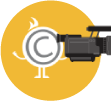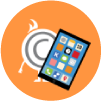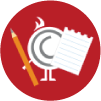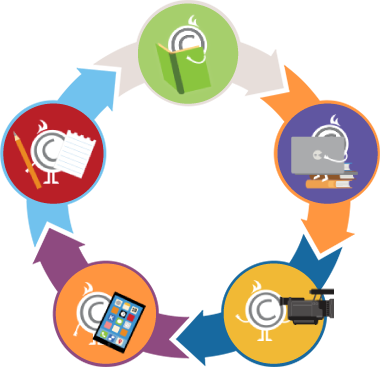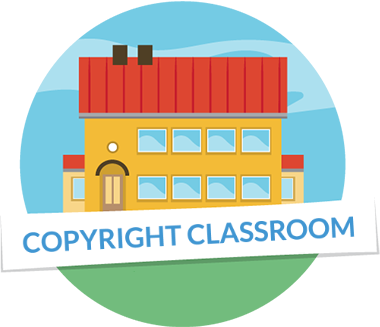Creating your work
- Outline, draft, plan
It is always useful to plan what you are aiming to create. If this is an essay, a list of headings to help organise your ideas can provide a structure. Under each heading your plan can include the ideas or information you wish to include there. A topic map can also be helpful in figuring out how you will organise all the different aspects you want to include. For a visual project, sketches or a story board can help you to plan how you wish to express your ideas.
Creating a first draft: It can be helpful to suspend self-criticism and produce a first draft knowing that it will not be suitable for submission and may well be too long, if this relates to an essay. Then you can review your work, check what maybe missing, improve grammar and spelling etc. Always read over your work.
Using AI for creating your work: Now that generative AI is available it is being widely used in business and education as a short cut to developing creative work. Your school/college will have a policy on this, and it is essential that you follow the guidelines given which may be not to use it at all, or to make it clear that you have used it and how. In using generative AI, assuming your school/college allows this, it is essential to:
– Declare that generative AI has been used and how.
– Be aware that any ‘facts’ generative AI adds to those you have researched yourself cannot be relied on.
– Regard a draft created this way as a first draft only that you MUST edit to ensure it reflects your own ideas, original input and personal way of expressing yourself. - Use different types of material
If you want to use the work of others, either to reproduce it exactly, or to modify it, usually, you need permission from the copyright holders. Remember that copyright protects the expression of ideas and information, but you are free to use the information, data, ideas, principles and methods in others’ work as long as you express them in your own words and create an independent, original work of your own.
You can also quote sources verbatim under the copyright exception for criticism or review, provided you accurately identify the source of the quotation.
Check which permissions are required to use various works.
Copyright applies on the internet as much as it does to physical works. You need permission from the creators to use images, texts, and other works that have been shared or published online. The creator may have allowed the use of the work, for example, through a Creative Commons licence. Such works may be used in accordance with the licence terms.
More information about copyright and permissions for using works can be found in the Information about Copyright and Use of Works sections of this website. - Quoting from sources
Under your school/college’s ICLA copying licence, if your project is part of your coursework, you can use up to 5% from a book, or one article from a serial publication. The source, including author and publisher, should always be acknowledged. You can also modify text and images and create ‘mash-ups’, again provided sources are acknowledged and it is made clear what modifications have been done. Work created under the ICLA licences cannot be published online – it is solely for use within your school/college.
If you are working on a project independently, according to copyright law there are exceptions for review and criticism, for caricature, parody and pastiche, and for verbatim quotation from published works without needing the author’s permission, provided only relevant extracts are used and the source is acknowledged. You can quote to the extent necessary for the purpose.
To repeat: When quoting a work, always remember to reference the author and the title of the work.
You can use:
indirect quotes, which are summaries of the text
direct quotes - Referencing
When using someone else’s work, it is always important to reference the author and the source according to good practice. Keep a note of this as you go along as it can be difficult and time-consuming to construct a reference list retrospectively. Quotes within the text should be marked with quotation marks and references. In the reference list at the end of an essay, presentation, project, or any other text, more detailed information about the sources should be provided. Make thorough references. When referring to books, newspapers, and other printed sources, it is important to include the page numbers where the referenced text can be found.
When referring to sources on the internet, in addition to the publication date, it is also necessary to include the date when the page was accessed, as the content of the website may change after you have accessed it.
There are different systems for referencing, including ‘Harvard’ (name and date in the text) and Vancouver (superscript number in the text). Instructions and examples for referencing different sources can be found here.
Universities and colleges, and specific courses, use different conventions for referencing. Check with your own institution to find out what applies to your course. - Reviewing the purpose and approach of your own work
Consider what the purpose of your work is, how it will serve that purpose, the relevance, quantity and quality of the information you have included, and who will make up the target audience.
Using someone else’s text without referencing the source or claiming another person’s text as your own constitutes plagiarism and carries severe penalties. This can also lead to reputational damage, sometimes many years later.
When using someone else’s work, always provide the creator’s name and the source.
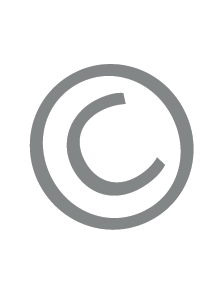
Assignment tip:
Look for material related to the topic being discussed in class or in the assignment on the internet and other resources (books, newspapers, etc.). Practise making correct references to various sources.


